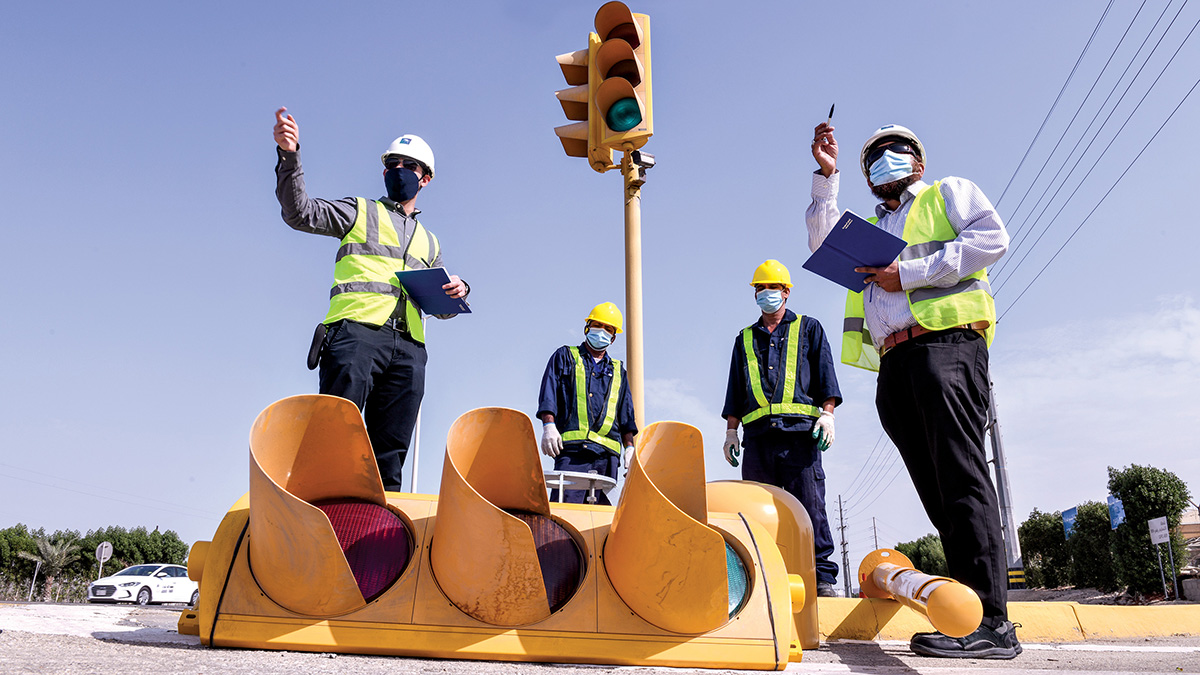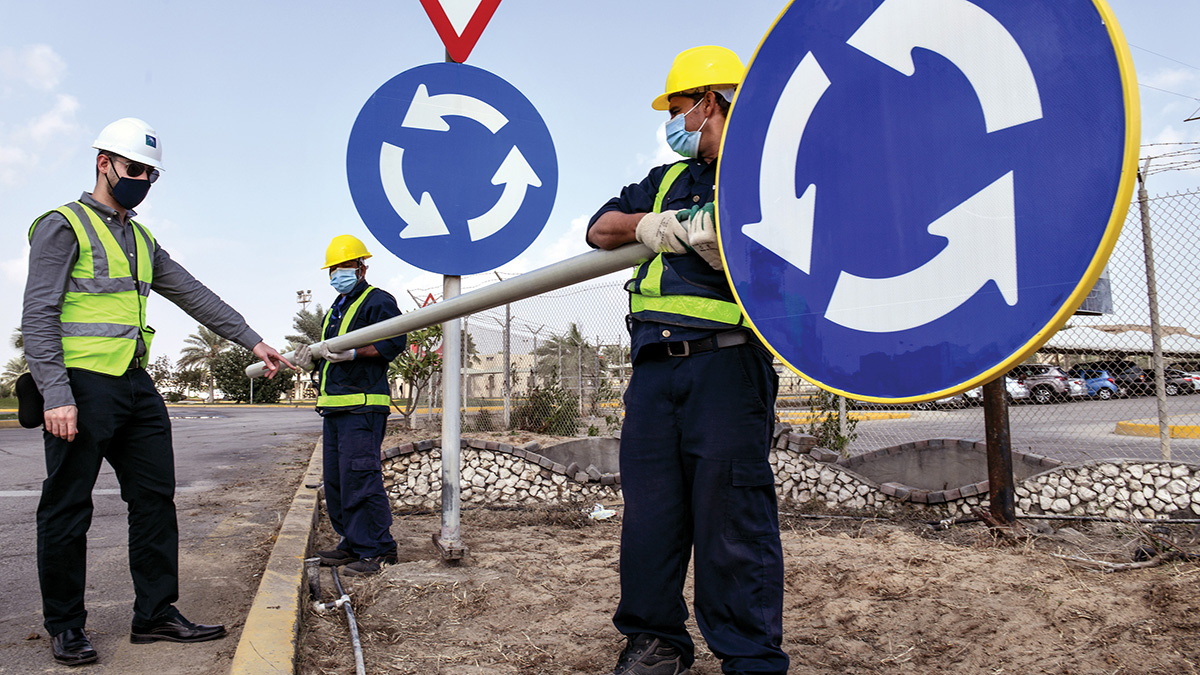Nonmetallics
Driving nonmetallic solutions

Global December 02, 2020 - By
Glass fiber reinforced polymer traffic signs deployed within Aramco’s facilities.
In alignment with Aramco’s efforts to promote nonmetallics in the building and construction sector, our Consulting Services (CSD) and Transportation and Equipment Services (T&ESD) departments have piloted glass fiber reinforced polymer (GFRP) traffic signs and signal poles within Aramco’s facilities.
Design
The traffic sign and signal poles were designed and produced to international standards and meet the loading and temperature requirements of the Kingdom. GFRP is produced indirectly through crude oil, and as such, promotes the use of crude oil derivatives in supporting the Kingdom’s economy.
GFRP traffic sign poles were installed for the first time in Dhahran at the intersection of Old Abqaiq Road and the T&ESD Admin Building. The poles, installed between July 2019 and April 2020, will be monitored for a minimum of six months from their installation date to assess their overall performance.
The reason for piloting the GFRP poles is to reduce ongoing maintenance liability and to increase safety of vehicle occupants — in case of a collision — in comparison to steel posts.
There are thousands of traffic signs and poles in company facilities and throughout the Kingdom, all being essential to control traffic movements at intersections, roundabouts, and roadways, informing and warning drivers and pedestrians of road direction changes and hazards. Generally, these traffic signal and sign poles are made of steel, aluminum, or cast iron.
Steel posts are heavy to transport and install. Also, the steel posts and fittings (nuts, bolts, and washers), which hold the traffic sign and signal equipment in place are susceptible to corrosion. This is a major issue, which results in frequent repair and or replacement to maintain the serviceability of these traffic signs and signal poles.
A better value
The GFRP poles are lightweight, easier to install, construct, and do not suffer from corrosion in comparison to steel poles. The fittings to fix the traffic signs and signal equipment are tailor-made from GFRP to meet the specific equipment fitting requirement. This removes the issue of constant replacement and inspection of these fittings, which are difficult and expensive to repair and replace.
And though GFRP poles cost more initially, they have a lower maintenance cost and are expected to last longer, providing greater value over their lifetime.
Sound construction
GFRP poles are directly embedded into the concrete foundation, and the traffic sign is fixed on the pole. The traffic sign plates are constructed using GFRP, and the reflective sheeting is glued to the plate. The traffic signal poles and bases are also made of GFRP and fixed using anchor rods to prefabricated concrete foundations. Fixing the signal head to the pole is easily done, along with cameras and other fittings.
CSD advocates the use of nonmetallic in the Kingdom for lighting, traffic signs and signal poles through technical events, and in association with the local standard body Saudi Standards, Metrology and Quality Organization.
The team working on this project were Waseem A. Khatri (CSD) and Tariq K. Al-Baker (T&ESD).




